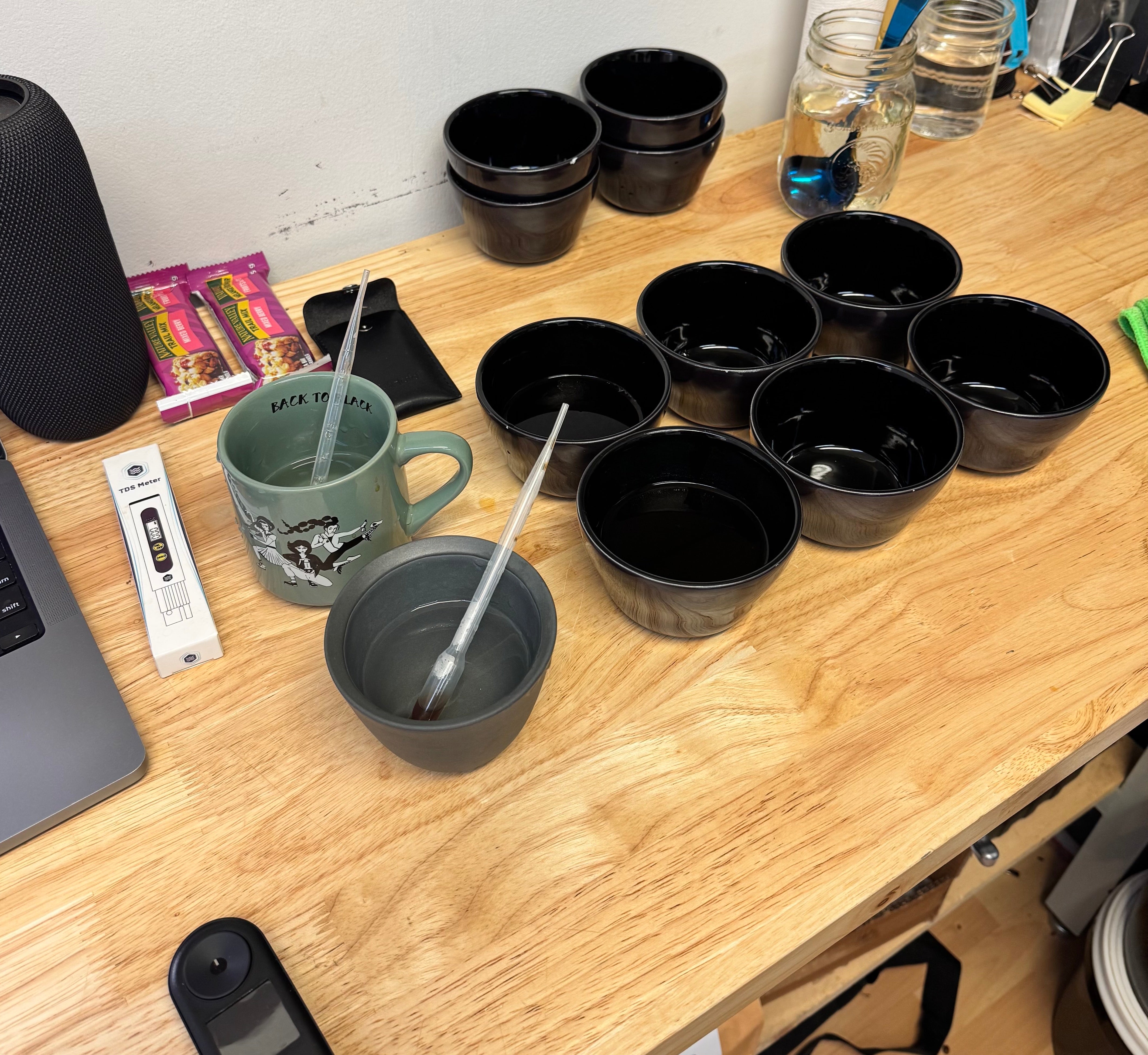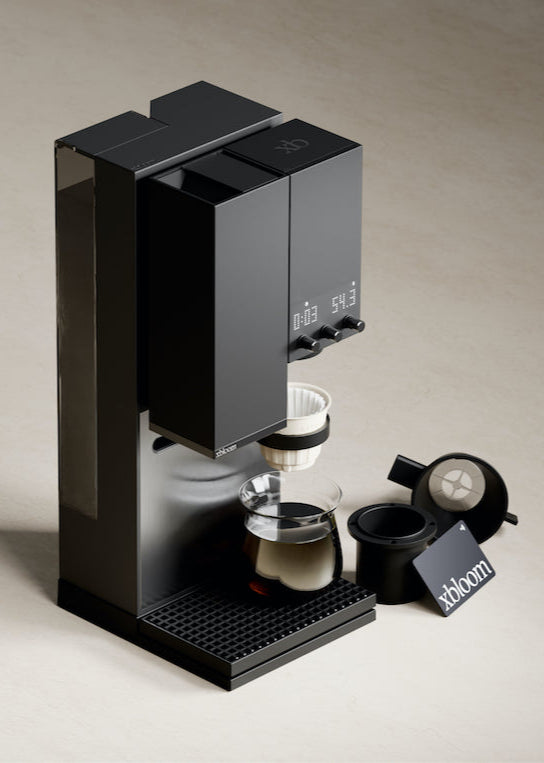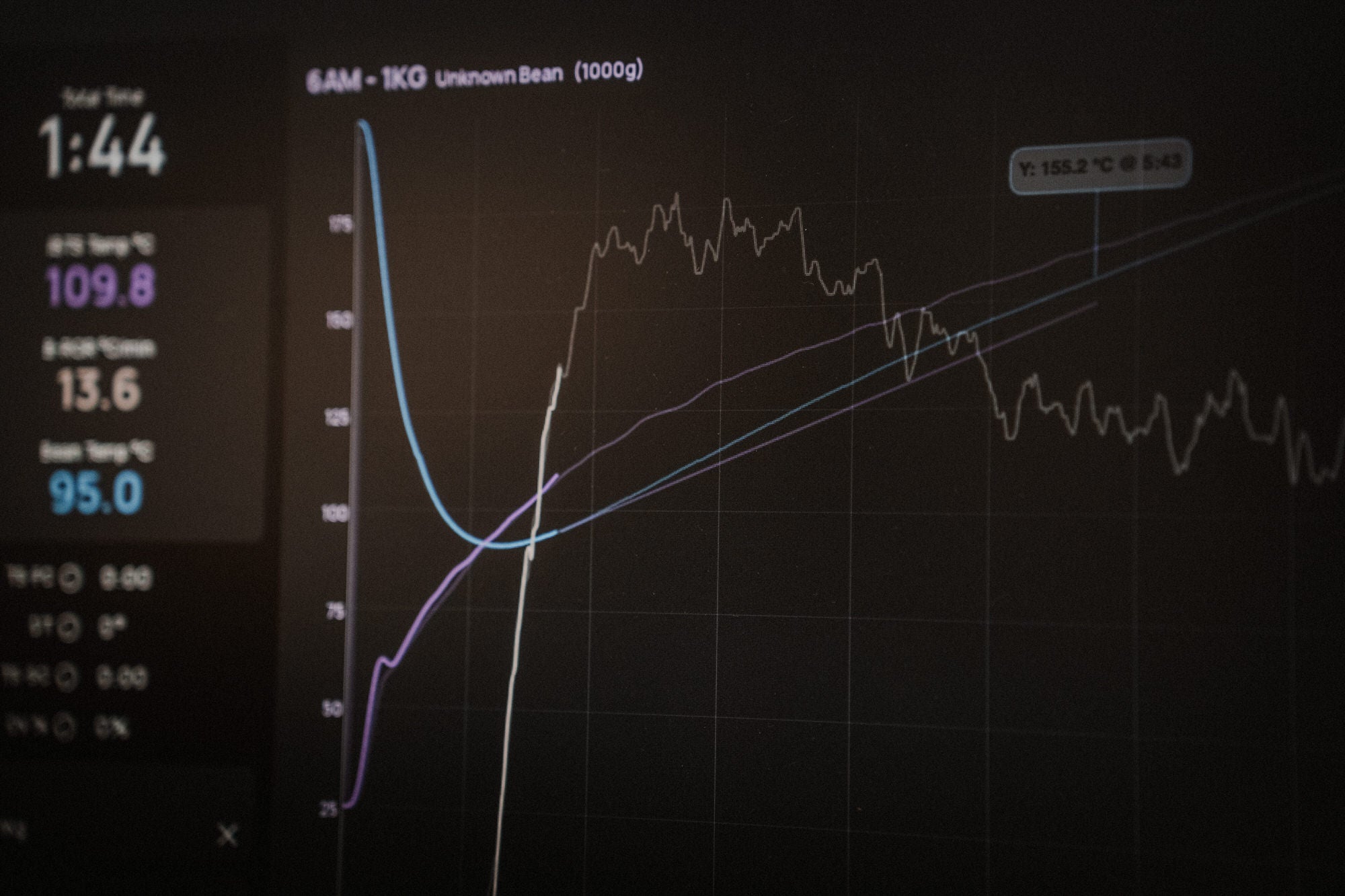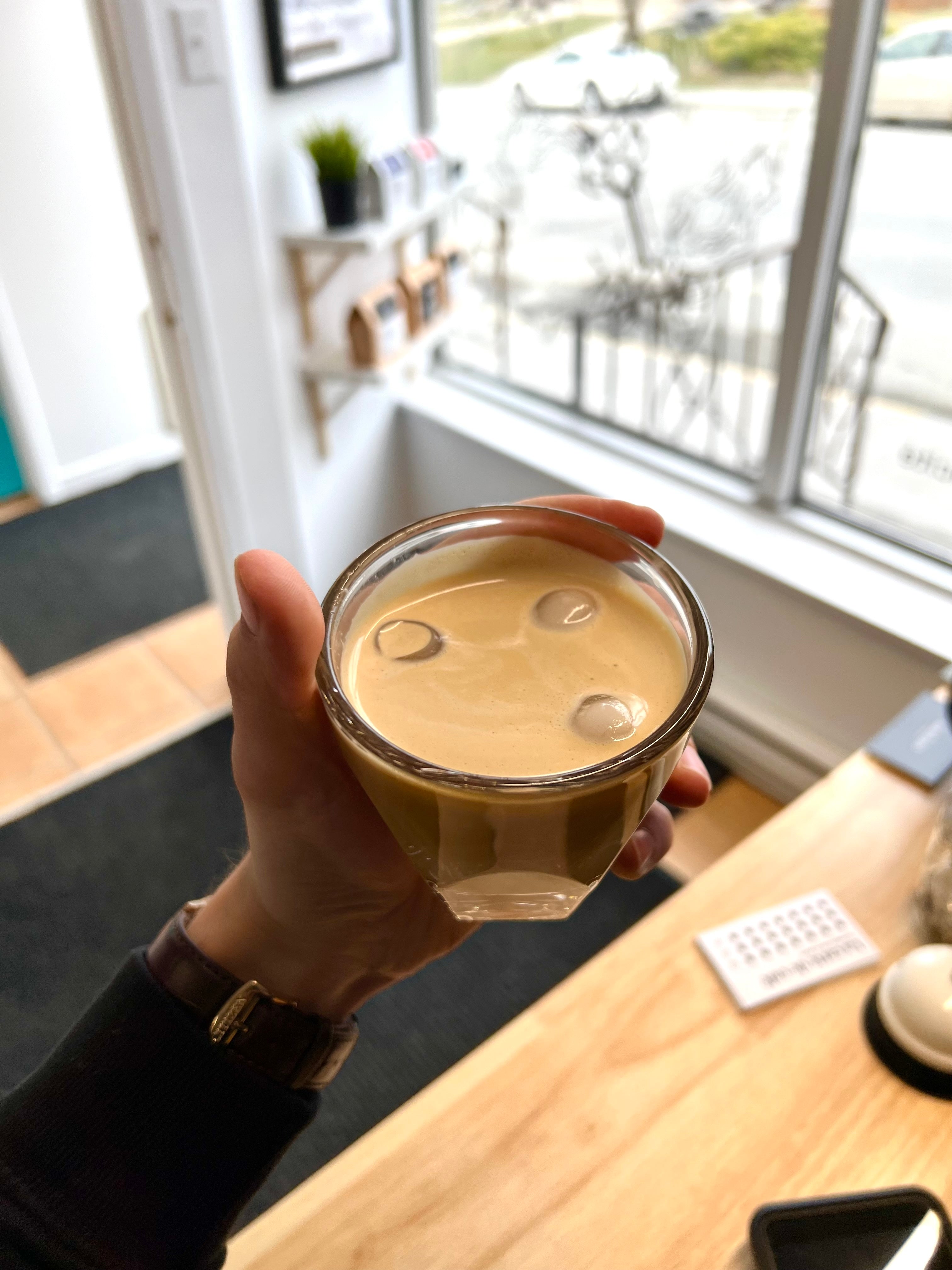Free shipping across Canada 2 bags or 1kg 🤩
xBloom Studio Focus #3 - Protocol and evaluation
Last edit Aug 6, 2025 ● Published Aug 6, 2025 ● Louis-Charles Blais
I established a preparation and evaluation protocol before starting the test series.
The tests were conducted on two xBloom Studio machines. Both machines were calibrated at the same time, updated to the same firmware, and performed three control brews using the same coffee and recipe to compare their performance.
I’ll refer to them as xBloom 1 and xBloom 2. Machine 1 is the white one we've had at Nucleus for over a year, and machine 2 is the black one I have at home.
The Omni Dripper on xBloom 2 is slightly tilted forward compared to the one on xBloom 1. As a result, xBloom 2 tends to get slightly lower EY because the bed isn’t extracted as evenly as with xBloom 1. However, this doesn’t seem to affect other variables beyond consistently having a slightly lower EY. I’ve ordered a new Omni Dripper in hopes of resolving the issue.
The filters used were the standard xBloom filters.
xBloom 1 was assigned to our Lucero, a washed Colombian coffee with a light roast.
xBloom 2 was assigned to our Eldorado, a natural Brazilian coffee with a medium roast.
Each variation was therefore tested on both xBlooms with their respective coffees.
Test Protocol
For each variation, here’s the testing protocol:
- Set the recipe in the xBloom app
- Weigh exactly 15.0g of coffee, add one spray of RDT (water mist), mix the coffee and place it in the grinder
- Add a filter and start the brew
- Do not touch the machine, and wait for the finishing sound before removing the carafe
- Weigh the carafe to get the total extracted volume
- Stir with a clean spoon and take a 3ml sample with a pipette
- Place the pipette in a container of warm water to temper the sample
- Pour the remaining coffee into a cupping glass
- Measure extraction with the DiFluid R2:
- Once the pipette is tempered, shake it well and add just enough coffee to cover the DiFluid sensor
- Measure extraction several times until the same value appears three times
- Taste using a cupping spoon and take notes on the coffee
- Clean the Omni Dripper, pipette, and carafe
Coffee Evaluation
I established six aspects to evaluate for each coffee to provide a solid interpretation of the final result:
- Acidity (1–10)
- Bitterness (1–10)
- Complexity (1–10)
- Sweetness (1–10)
- Clarity (1–10)
- Texture (1–10)
Each aspect is scored based on its presence, not preference. For example, a highly acidic coffee will likely score high in acidity and low in bitterness. That doesn’t mean the acidity is pleasant, just that it’s present.
I should mention that the coffees were tasted by my friend Marc-Antoine (a barista and roaster) and myself. Neither of us are Q-graders or hold any formal certifications. Our palates are trained to understand coffee, but our perceptions are still subjective based on our experiences. That said, our impressions were very aligned throughout the process, and we both tasted each coffee.
Uncertainties and Potential Improvements
These tests are not perfect but represent a sufficient sample size to draw some conclusions. Still, like any proper scientific study, here are some uncertainties and areas for potential improvement:
Sample Size
Although we ran each test on two machines and two coffees, a sample of four tests per variation (one per coffee per machine) would have been more reliable and allowed us to catch inconsistencies and retest anomalous results.
Coffee Variations
Tests could be affected by quakers or leftover silver skin stuck to beans, which would change the final perception of the coffee. These factors likely wouldn’t significantly impact EY. Sorting the beans more meticulously before testing could reduce this, but it would require a lot of time to be effective.
Environmental Variations
Water temperature in the machine’s reservoir, ambient room temperature, and grinder temperature can all fluctuate throughout the day. However, I consider these fluctuations minor during our tests and believe they had limited impact on final results and interpretation.
More Precise Evaluation
Obviously, having more than two tasters would increase data accuracy, and the experience of a Q-grader could have validated the scoring more thoroughly.
Imperfect but Valid and Consistent
In short, the tests followed a rigorous protocol despite the sources of variation and imperfection.
Some results show clear trends, while others are more ambiguous. The data analysis will focus on the clear trends, while the more ambiguous ones will likely be explored in future, more in-depth testing.

xBloom Studio
The Coffee Geek's Co-Pilot
Co-pilot of our daily routine since the very beginning, the xBloom Studio is the only machine capable of replicating and innovating on manual infusion.
All our coffees are tested on the xBloom Studio and have their own personalized recipes, allowing you to achieve a perfect extraction in just one click.




Comments
There are no comments.
Your comment